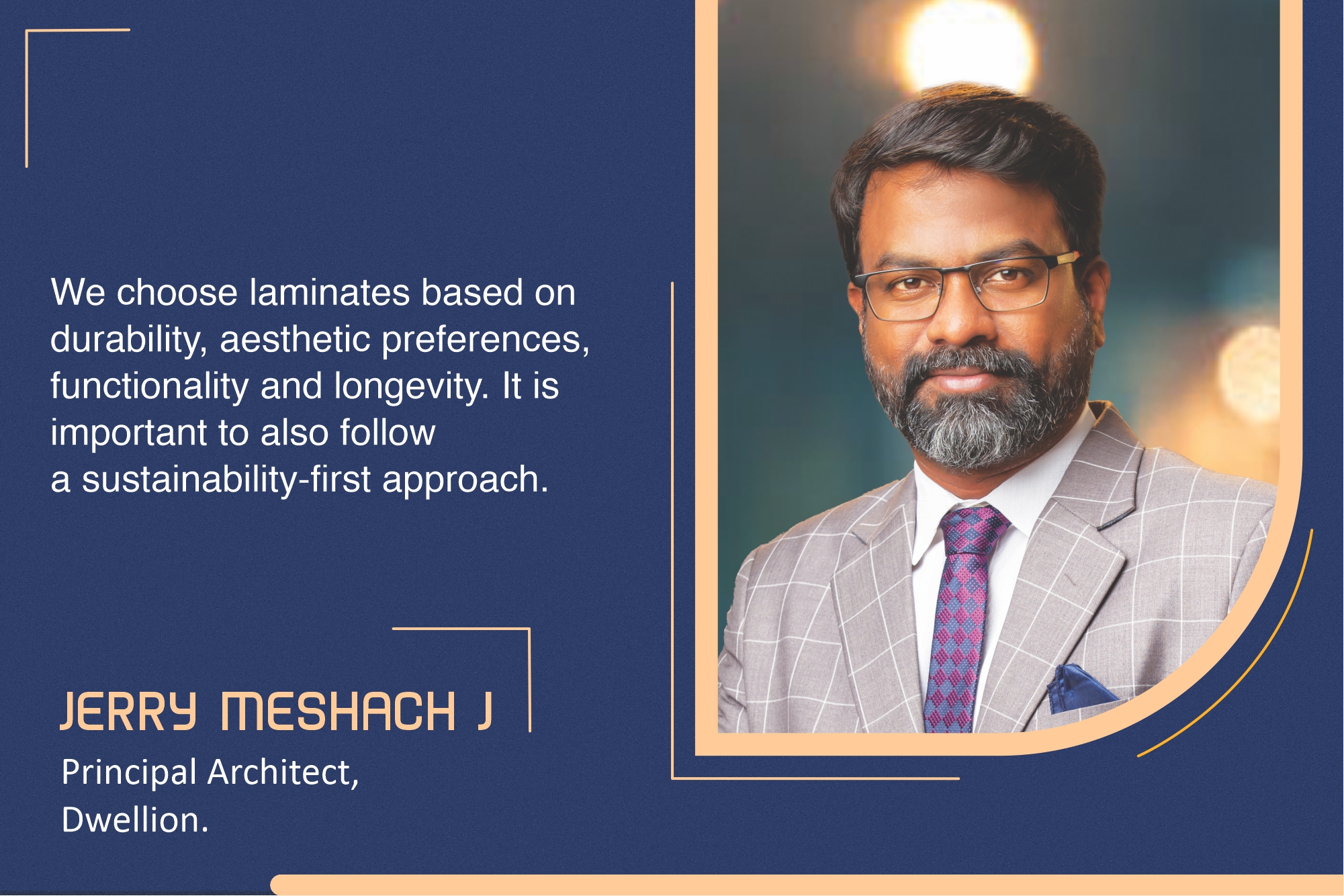An integrated approach to designing laminates

In this interaction, Ar. Jerry discusses some of the key strategies to consider while choosing laminates. He also explains the best practices for integrating laminates with other components like roofing, facades, etc., which can help realise sustainable building goals.
Can you walk us through the latest trends and technologies in laminates for the Indian market?
The Indian laminate market embraces key trends and technologies focused on sustainability, innovation, and versatility. These include eco-friendly, digitally printed, antibacterial, anti-viral, and textured laminates. While eco-friendly laminates are made from recycled materials and low-formaldehyde emissions, digitally printed laminates are highly customisable with unique, photorealistic designs. India also has an increasing demand for antibacterial and anti-viral laminates, especially post-pandemic. Similarly, textured surfaces and 3D laminates with stone, wood, and fabric finishes are becoming increasingly popular. High-pressure laminates (HPL) are increasingly used in cladding, known for their durability and resistance. Technological advancements, such as laser engraving and 3D embossing, are pushing creative boundaries. Additionally, bold patterns, metallic finishes, and smart furniture integration are gaining traction, making laminates a versatile choice for residential and commercial spaces.
How can architects ensure sustainable building goals while using laminates?
Some key strategies that architects can adopt include choosing eco-friendly laminates made from recycled materials and low-emission resins and choosing durable, high-quality laminates with an extended lifecycle, reducing the need for replacements and minimising waste. Architects should support brands adopting energy-efficient manufacturing processes using less water and energy. Other key strategies include incorporating recyclable laminates to reduce landfill waste, opting for products with low VOC emissions, and sourcing laminates locally, reducing the carbon footprint.

Can you explain the best practices for integrating laminates with other building components, such as roofing, glazing, facades, etc.?
First, ensuring proper surface preparation for optimal adhesion is important, especially with materials like glass or metal. The next step is choosing weather-resistant laminates for exterior applications that help withstand environmental factors such as UV radiation and moisture. While selecting facades, high-pressure laminates (HPL), known for their durability and low maintenance, is the best choice. Architects should carefully choose the components by maintaining consistency in design, colour, texture, and function. Large-scale installations can be more challenging and paying attention to thermal expansion is important to avoid structural issues. Other best practices include using eco-friendly adhesives to minimise environmental impact and scheduling regular inspection and maintenance of laminate surfaces, especially on exposed areas, to ensure longevity and aesthetics.
What are the parameters/factors determining laminate thickness for building projects? Do they vary for residential, commercial, and industrial buildings?
Durability and aesthetic preferences are two important factors governing laminate thickness. For example, exposed areas require thicker laminates for increased durability. Thicker laminates withhold higher wear and tear, such as countertops. Aesthetic preferences and design choices also play a role, with thicker laminates providing a more luxurious, bold look. For residential buildings, thinner laminates often meet the needs for furniture and cabinetry, while commercial spaces require thicker laminates for durability in high-use areas like offices or retail stores. Industrial buildings demand the thickest laminates due to exposure to harsh conditions, such as chemicals or heavy machinery. Additionally, fire resistance and sound insulation requirements may influence thickness decisions.
For more details, visit: https://www.dwellion.in/
Cookie Consent
We use cookies to personalize your experience. By continuing to visit this website you agree to our Terms & Conditions, Privacy Policy and Cookie Policy.










